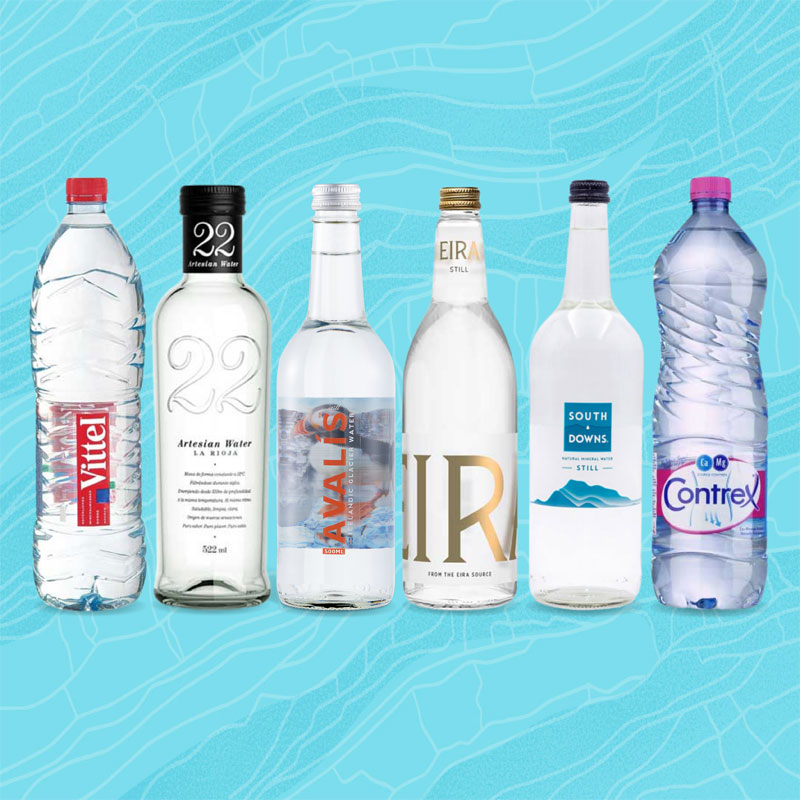Need an alternative to Single-Use Plastic Bottles..?
Explore our range Glass-Cans-Cartons
Most Popular
-
Dash Water Lime Flavour Sparkling Water Can 12x330ml
Regular price £15.89
(£13.24 Ex. VAT)Regular priceUnit price / per -
Dash Water Peach Flavour Sparkling Water Can 12x330ml
Regular price £15.89
(£13.24 Ex. VAT)Regular priceUnit price / per -
Dash Water Cucumber & Mint Flavour Sparkling Water Can 12x330ml
Regular price £15.89
(£13.24 Ex. VAT)Regular priceUnit price / per -
San Pellegrino Aranciata Can 24 x 330ml
Regular price £22.99
(£19.15 Ex. VAT)Regular priceUnit price / per -
Dash Water Raspberry Flavour Sparkling Water Can 12x330ml
Regular price £15.89
(£13.24 Ex. VAT)Regular priceUnit price / per -
Acqua Panna Still Bottled Water Plastic Bottle 6x1.5L
Regular price £16.69
(£13.90 Ex. VAT)Regular priceUnit price / per -
Dash Water Lemon Flavour Sparkling Water Can 12x330ml
Regular price £15.89
(£13.24 Ex. VAT)Regular priceUnit price / per
NEW IN!
-
Dash Water Lime Flavour Sparkling Water Can 12x330ml
Regular price £15.89
(£13.24 Ex. VAT)Regular priceUnit price / per -
La Mortuacienne Cloudy Lemonade Glass Bottle 6x1L
Regular price £25.49
(£21.24 Ex. VAT)Regular priceUnit price / per£29.99Sale price £25.49 (£21.24 Ex. VAT)Sold out -
Fiji Bottled Water Plastic Bottle 24 x 330ml
Regular price £20.95
(£17.45 Ex. VAT)Regular priceUnit price / per -
San Pellegrino Aranciata Can 24 x 330ml
Regular price £22.99
(£19.15 Ex. VAT)Regular priceUnit price / per -
Cedea Sparkling Water Glass Bottle 12x750ml
Regular price £65.99
(£54.99 Ex. VAT)Regular priceUnit price / per -
La Mortuacienne Orange Lemonade Glass Bottle 6x1L
Regular price £25.49
(£21.24 Ex. VAT)Regular priceUnit price / per£29.99Sale price £25.49 (£21.24 Ex. VAT)Sold out -
Acqua Panna Still Bottled Water Plastic Bottle 6x1.5L
Regular price £16.69
(£13.90 Ex. VAT)Regular priceUnit price / per -
Re: Water Sparkling Aluminium Bottle 24x500ml
Regular price £34.99
(£29.15 Ex. VAT)Regular priceUnit price / per -
Re: Water Still Aluminium Bottle 24x500ml
Regular price £34.99
(£29.15 Ex. VAT)Regular priceUnit price / per -
Cedea Still Water Glass Bottle 12x750ml
Regular price £65.99
(£54.99 Ex. VAT)Regular priceUnit price / per -
Virgil's Black Cherry Glass Bottle 12x330ml
Regular price £27.49
(£22.90 Ex. VAT)Regular priceUnit price / per -
Virgil's Cream Soda Glass Bottle 12x330ml
Regular price £27.49
(£22.90 Ex. VAT)Regular priceUnit price / per -
Virgil's Root Beer Glass Bottle 12x330ml
Regular price £27.49
(£22.90 Ex. VAT)Regular priceUnit price / per -
La Mortuacienne Mandarin Lemonade Glass Bottle 6x1L
Regular price £25.49
(£21.24 Ex. VAT)Regular priceUnit price / per£29.99Sale price £25.49 (£21.24 Ex. VAT)Sale -
La Mortuacienne Pink Grapefruit Lemonade Glass Bottle 6x1L
Regular price £25.49
(£21.24 Ex. VAT)Regular priceUnit price / per£29.99Sale price £25.49 (£21.24 Ex. VAT)Sold out -
La Mortuacienne Pink Lemonade Glass Bottle 6x1L
Regular price £25.49
(£21.24 Ex. VAT)Regular priceUnit price / per£29.99Sale price £25.49 (£21.24 Ex. VAT)Sale -
La Mortuacienne Pink Lemonade Glass Bottle 12x330ml
Regular price £20.39
(£16.99 Ex. VAT)Regular priceUnit price / per£23.99Sale price £20.39 (£16.99 Ex. VAT)Sale -
La Mortuacienne Cloudy Lemonade Glass Bottle 12x330ml
Regular price £20.39
(£16.99 Ex. VAT)Regular priceUnit price / per£23.99Sale price £20.39 (£16.99 Ex. VAT)Sale -
Radnor Hills Sparkling Bottled Water Plastic Bottle 24 x 500ml
Regular price £14.59
(£12.15 Ex. VAT)Regular priceUnit price / per -
Chiarella Sparkling Water Glass Bottle 6x700ml
Regular price £27.85
(£23.20 Ex. VAT)Regular priceUnit price / per -
Chiarella Still Water Glass Bottle 6x700ml
Regular price £27.85
(£23.20 Ex. VAT)Regular priceUnit price / per -
Punchy Mango Hydration Can 12 x 330ml
Regular price £24.12
(£20.10 Ex. VAT)Regular priceUnit price / per -
Punchy Blueberry Hydration Can 12 x 330ml
Regular price £24.12
(£20.10 Ex. VAT)Regular priceUnit price / per -
Razza Raspberry Lemonade Glass Bottle 24 x 330ml
Regular price £40.99
(£34.15 Ex. VAT)Regular priceUnit price / per -
Razza Raspberry Lemonade Can 24 x 250ml
Regular price £29.99
(£24.99 Ex. VAT)Regular priceUnit price / per
SHOP BY CATEGORY
-

All Bottled Waters
221 products
All Bottled Waters
221 products
-

Eco 'on-the-go' Water
20 products
Eco 'on-the-go' Water
20 products
-

EEA Recognised Mineral Waters
82 products
EEA Recognised Mineral Waters
82 products
-

Magnesium Waters
17 products
Magnesium Waters
17 products
-

What is Mineral Water? Origins, Benefits, and D...
Natural Mineral Water is defined as water that is naturally pure and free from harmful microorganisms. It must be free of contaminants, including parasites and bacteria such as E. coli,...
What is Mineral Water? Origins, Benefits, and Differences from Other Waters
13 JanNatural Mineral Water is defined as water that is naturally...
-

The Rise of Non-Alcoholic Beverages
In recent years, the beverage industry has witnessed a significant shift towards non-alcoholic options, driven by a growing consumer focus on health, wellness, and mindful drinking. As more individuals embrace...
The Rise of Non-Alcoholic Beverages
13 JanIn recent years, the beverage industry has witnessed a significant...
-

What is Enhanced Water? A Guide to the Benefits...
Bottled water has long been a staple in the beverage market, but it’s also a category that’s seen significant innovation lately. One segment that’s quickly gaining popularity is enhanced water....
What is Enhanced Water? A Guide to the Benefits and Ingredients
13 JanBottled water has long been a staple in the beverage...
Are You a Producer of Premium Water or Soft Drinks?
Looking for an opportunity to market your products through London’s largest distributor ? Talk to us!




































